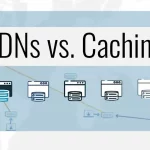
Tapping into AR and VR for Content Marketing: Creating Immersive Experiences for Tech Enthusiasts
- Post
- August 8, 2023
- Content Marketing, SEO & Digital Marketing, Web Technologies
- 0 Comments
As technology evolves, so does the realm of content marketing. In an era dominated by gadget lovers and tech enthusiasts, businesses need to think beyond traditional methods. Enter Augmented Reality (AR) and Virtual Reality (VR), the dynamic duo poised to revolutionize content marketing strategies. By harnessing the power of AR and VR, brands can create captivating experiences that engage, educate, and enthrall their audience. In this comprehensive guide, we’ll delve into the strategies, benefits, and real-world examples of incorporating AR and VR into your content marketing endeavors.
The Rise of AR and VR in Content Marketing
In recent years, AR and VR technologies have transitioned from futuristic novelties to mainstream tools. AR overlays digital elements onto the real world, while VR offers fully immersive, simulated environments. The synergy between these technologies and content marketing is evident – they enable brands to deliver experiences that transcend the limitations of traditional media.
Crafting Interactive Product Showcases
One of the most impactful applications of AR and VR in content marketing is interactive product showcases. Imagine offering potential customers the ability to visualize and manipulate products in a virtual space. This approach not only enhances the shopping experience but also reduces the uncertainty associated with online purchases.
Gamified Brand Engagement
Gamification has proven to be a potent engagement tool. Integrating AR and VR elements into gamified content marketing campaigns enhances user interaction. By creating challenges, quests, or interactive storylines, brands can foster a deeper connection with their audience.
Immersive Storytelling
Compelling storytelling lies at the heart of effective content marketing. AR and VR provide new dimensions to storytelling by allowing users to become active participants. Brands can immerse customers in narratives, taking them on virtual journeys that evoke emotions and forge lasting memories.
Enhancing B2B Content Marketing
AR and VR aren’t limited to consumer-oriented campaigns. B2B content marketing can also benefit from these technologies. For instance, complex products or services can be explained through interactive demonstrations, simplifying communication and increasing engagement.
Real-World Success: Content Marketing Examples
Several pioneering brands have already harnessed AR and VR to create exceptional content marketing campaigns. IKEA’s AR app lets users visualize furniture in their homes before purchasing. Jaguar’s VR experience immerses users in their latest car models. These examples showcase the versatility and impact of AR and VR in various industries.
SEO Benefits of AR and VR Content
Not only do AR and VR elevate user experience, but they can also bolster your SEO efforts. Google values dwell time, and immersive content tends to keep users engaged for longer periods. This prolonged interaction signals search engines that your content is valuable, potentially boosting your search rankings.
Overcoming Challenges and Adoption Barriers
While AR and VR hold immense potential, they come with challenges like development costs and technological barriers. However, as technology progresses and adoption increases, these hurdles are gradually being surmounted, making it an opportune time to explore their incorporation into your content marketing strategy.
Final Words
In a digital landscape hungry for innovation, AR and VR offer a doorway to unprecedented content marketing experiences. By embracing these technologies, businesses can forge stronger connections with their audience, enhance engagement, and stand out in a crowded digital marketplace. From interactive product showcases to immersive storytelling, the possibilities are limited only by your creativity.
Commonly Asked Questions
Q1: How do I get started with AR and VR content marketing?
Getting started requires understanding your audience, defining clear objectives, and partnering with experienced developers. Identify opportunities where AR or VR can enhance your existing content strategy.
Q2: What industries can benefit most from AR and VR content marketing?
While AR and VR have broad applications, industries like real estate, e-commerce, automotive, tourism, and education are particularly poised to benefit from immersive experiences.
Q3: Are AR and VR content expensive to produce?
Costs can vary depending on the complexity of your project. However, as technology advances, development costs are gradually decreasing, making AR and VR more accessible for businesses of various sizes.
Q4: How can I measure the success of my AR and VR content campaigns?
Metrics such as engagement duration, interaction rates, and conversion rates can help gauge the effectiveness of your AR and VR content marketing efforts.
Q5: What’s the future of AR and VR in content marketing?
The future holds exciting possibilities. As technology becomes more sophisticated and adoption rates rise, AR and VR are likely to become integral components of innovative content marketing strategies.




